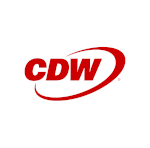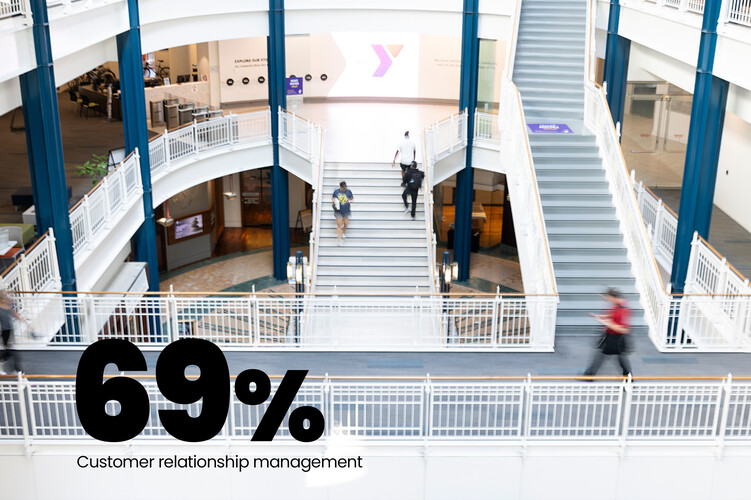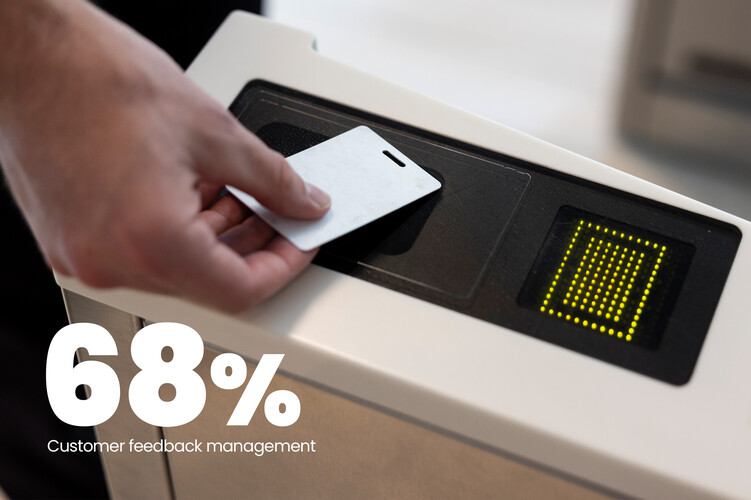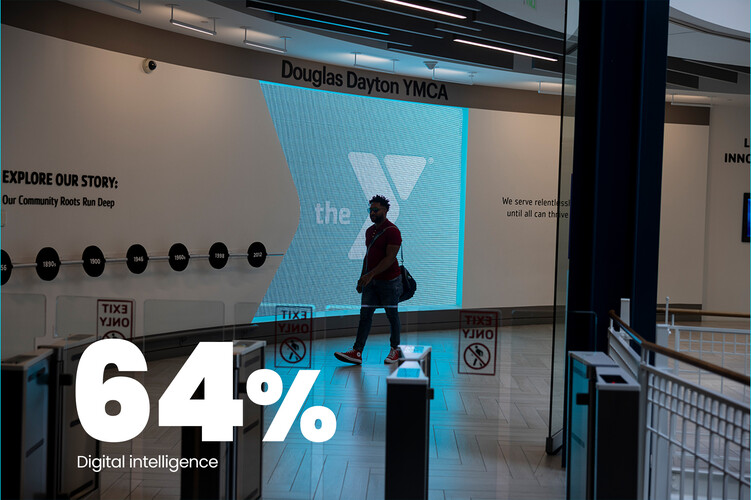Sometimes, the secret to surviving as a small business is knowing when it’s time to pivot. Just be sure to make the move smoothly — and in a way that’s good for your customers.
A few years ago, YMCA of the North found itself in this very spot. The organization oversees 32 YMCA locations across Minnesota and western Wisconsin.
The problems began with the pandemic, explains Tom Case, the organization’s executive vice president of technology and CIO. Membership dues had previously accounted for 70% of the organization’s overall revenue, but when people began choosing to stay home, that figure dropped to less than 40%.
Their surveys indicated that many members were interested in holistic health, or the interconnectedness of the body, mind and spirit. “We decided that we needed to reinvent ourselves and give the community what the community wanted,” Case says. “So that’s how we developed our well-being initiative — a new way to help people live healthier lives.”
Click the banner below to discover how third-party services help small businesses succeed.
The revised programming included everything from acupuncture and massage to wilderness retreats, nutrition workshops and individual health coaching. From his perspective, Case recalls, the changes didn’t affect his job, but they required a few upgrades to the organization’s systems, and one technology in particular would likely prove critical to the initiative.
“The customer relationship management solution we’d been using wasn’t able to scale,” he explains. “We needed a CRM that could grow with us as we went into all of these new areas.”
DISCOVER: How to deliver winning customer experiences with modern contact center tech.
The Right CRM Provides Integrated Data
Boosting membership would require marketing targeted to specific community demographics, so the organization would have to find a platform that provided integrated views of programming and customer data. “And just about everybody at the Y uses the CRM in one way or another,” Case says. “The system had to give us access to everything all in the same place.”
The platform they eventually deployed was Salesforce CRM, he says. The system combines IT functionalities with a comprehensive suite of sales and service features, and most important, it integrates with Traction Rec, a CRM membership management tool tailored to nonprofit community centers.
Today, YMCA of the North employees log in to Traction Rec to access the data inside Salesforce. Member information, programming details and registration, billing and payment data are all available on easy-to-read dashboards for quick reference or analysis and reporting.
With a window into everything from swimming and gym schedules to attendance numbers at group fitness classes, the organization’s sales and program teams can now track exactly how their wellness initiative is progressing. And with registration data from Y-run facilities such as childhood learning centers, they can reach out to families who aren’t yet members and share information about other programs.
“It’s really helpful in terms of how we develop our marketing campaigns,” Case says. “It makes a big difference when you’re able to see everything across the board.”
How CRM Helps SMBs Drive Revenue Experiences
For smaller, community-oriented organizations like YMCA of the North, attracting new business while serving current customers well can be critical to staying afloat. But thriving in a world where it can seem like the deck is stacked against small companies? That’s where CRM technologies often come into play.
“Even if you have only two or three employees, you need to have CRM capabilities,” says Kate Leggett, vice president and principal analyst for CRM and customer service at Forrester. Often, the solutions small businesses deploy are streamlined for ease of use and include embedded tools for functions such as bookkeeping and invoice generation, she adds. “The CRM powers every customer-facing employee with a singular view of each customer and their interactions and history. It allows you to deliver personalized experiences to drive customer retention and, ultimately, revenue.”
CRM platforms have evolved from relatively clunky early versions that typically required lots of manual input to modern systems that connect back- and front-office workflows through AI and automation, Leggett says. Zendesk, ServiceNow and Microsoft Dynamics 365 are just a few of the big players in a $50 billion U.S. CRM market that includes dozens of established vendors.
At YMCA of the North, they’re so confident in their new Salesforce CRM that they’ve even announced the deployment on their website, pointing out to their customers that the technology is part of their “commitment to improving your overall experience.” An FAQ explains that once members create a Y Community account, they’ll have access to the system and tools they can use to register for programs.
“The goal is to make everything easy,” Case says. “We want the organization to work for them.”
RELATED: How one company created an app to improve their customer service.
Building Integrations Atop CRM Systems
Another business that sees CRM as a crucial link between it and its customers is Honeylove in Los Angeles. While the women’s shapewear company topped $20 million in revenue in 2024, today it remains true to its small-business roots as an idea that took off with a Kickstarter campaign.
Since it launched in 2018 and sold its first wire-free bras in 2020, Honeylove has strived to put its customers front and center. Not only does the company rely on Zendesk as its primary CRM, says Trevor Humphrey, the company’s vice president of customer experience, it also depends on the system as a foundation for a variety of technology integrations.
“A lot of our focus over the past couple of years has been on building an automated suite on top of Zendesk to enable our team to be more efficient and provide higher-quality support,” he explains. The CRM’s “agent copilot,” for example, is a collection of AI-enabled features that surface insights on customer behavior to help Honeylove’s support specialists answer questions and resolve tickets. The system also integrates through application programming interface keys with e-commerce platforms such as Shopify and the email- and SMS-marketing technology Klaviyo.
DISCOVER: How to deliver winning customer experiences with modern contact center tech.
Humphrey says he likes Zendesk because it doesn’t attempt to minimize the “human touch” that’s so important to Honeylove’s success. Rather, it augments what his team members can do while allowing them to lead the way in every new customer interaction.
Today, Honeylove is increasing its product selection to meet the demands of its growing customer base, Humphrey notes. A shopper browsing the company’s website can find everything from bodysuits to “BlissWear” pants in addition to its bestselling bras. “Our support volume now is a lot different than it was a few years ago,” he says. “The technologies that we’re using have helped us adapt so we can help all these customers along on their journey.”
Humphrey adds that their CRM is really just a simple solution to a business challenge as old as business itself. “I look at it as a smarter way for us to provide an awesome customer experience,” he says.


















